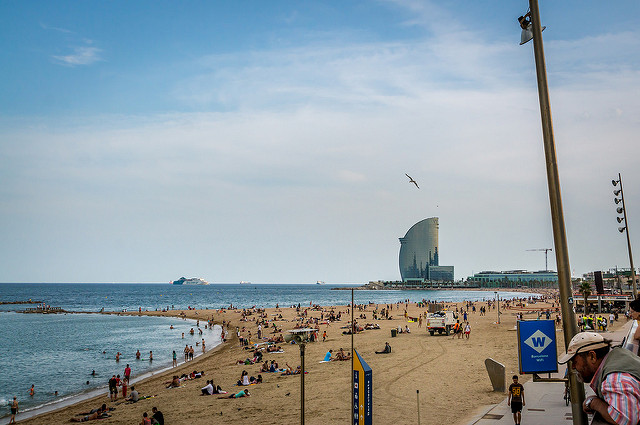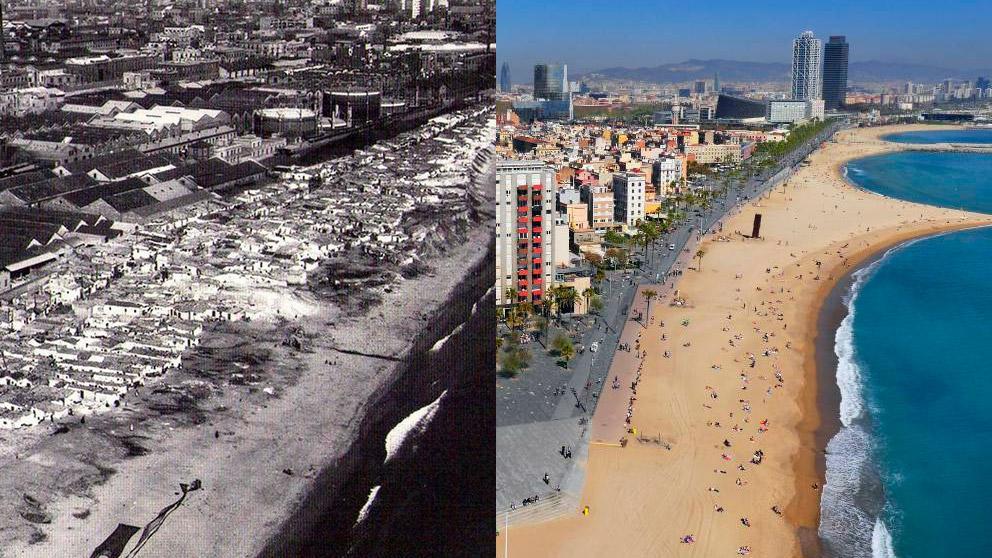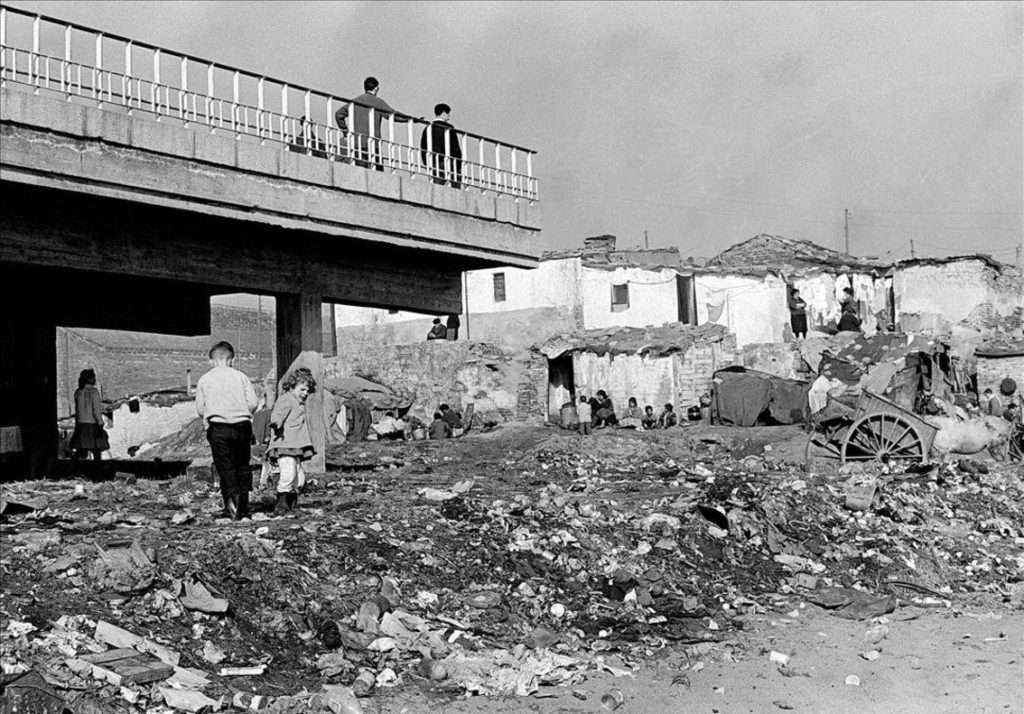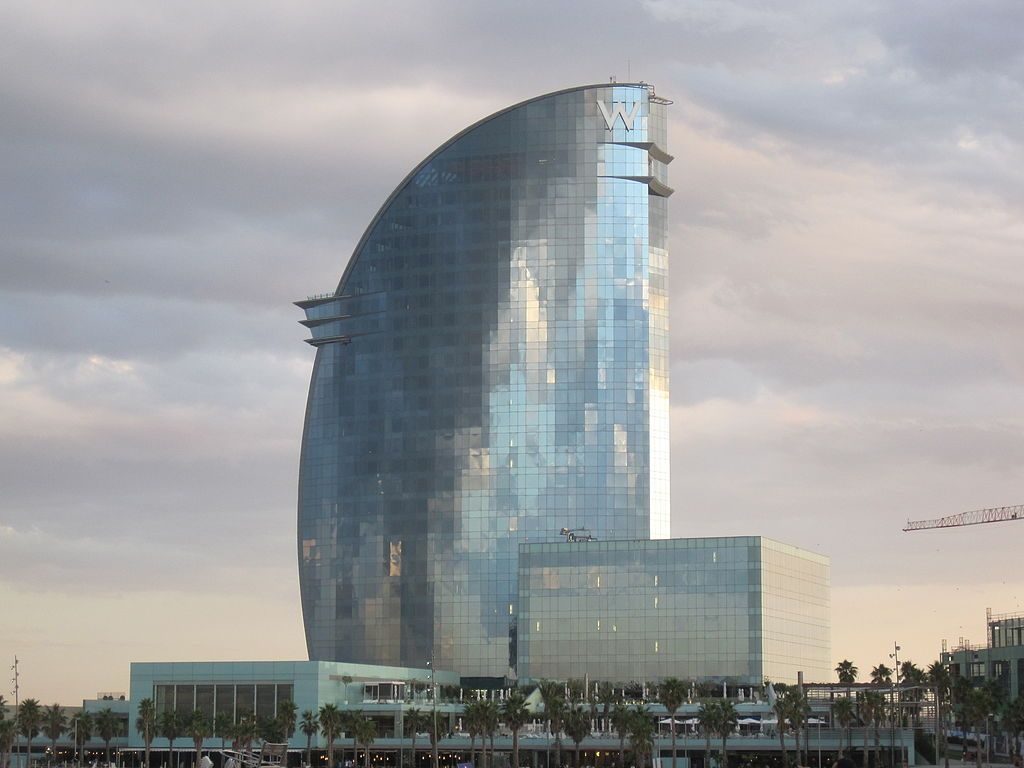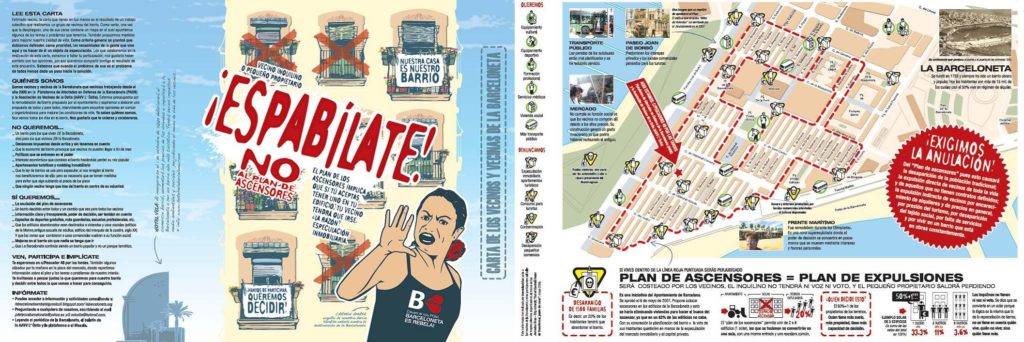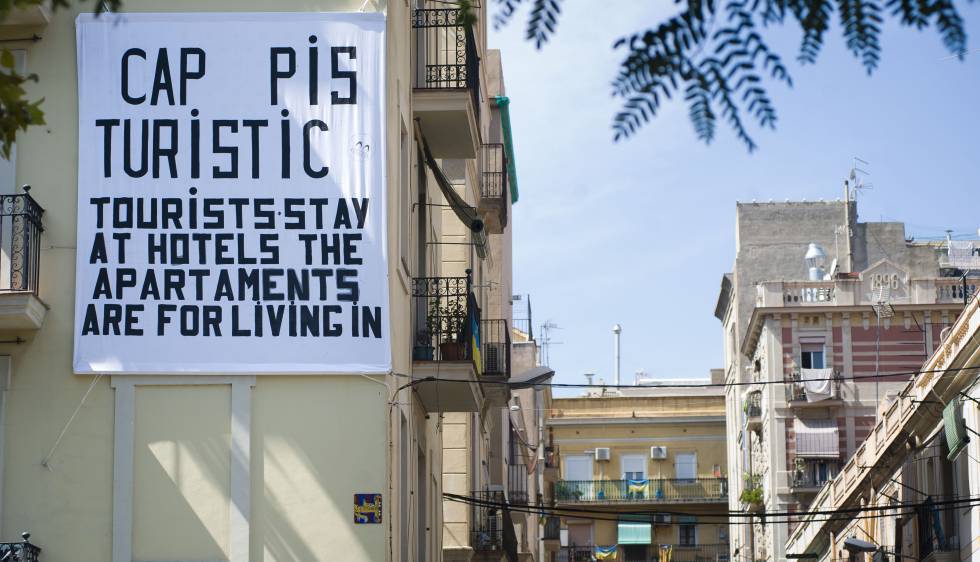
by Vijay Kolinjivadi and Daniel Horen Greenford
This piece is a long-form version of a piece that originally appeared on Aljazeera and can be found here.
On the borderlands of Montreal’s well-to-do Outremont district and the ultra-hipsterized Mile End district lies an expanse of land near the Canadian-Pacific Railroad line. This space separates these two districts from Parc-Extension (Parc-Ex for short). One of Canada’s poorest and most densely populated neighbourhoods, Parc-Ex is a port of call for many newly arrived immigrants. This is a place where affordable housing is increasingly hard to come by, and where eviction rates are on the rise. Walking along Avenue du Parc and its adjacent streets, one begins by passing vegan chain restaurants, hip vintage clothing joints, and coffee shops jostling for space among long-time Greek and Hasidic Jewish community establishments, before eventually arriving at Parc-Ex, with its small immigrant-owned grocery stores, halal boucheries, and community centres of a very different kind of neighbourhood.
It is here, on the periphery of these stark socio-economic separations, that the University of Montréal plans to construct its science campus MIL, with an emphatic commitment to ‘sustainable development’.
Sustainability for the new MIL campus means constructing LEED certified buildings to reduce environmental impact, establishing rainwater collection infrastructure, energy-efficient lighting and heat recycling, prioritizing electric vehicles and bikes, the planting of trees—all part of broader efforts to achieve carbon neutrality. This ethos of eco-efficiency is also shared by the new campus’ neighbours—tech firms, a Microsoft headquarters, and AI research laboratories loosely affiliated with the university. Fusing technological innovation with eco-efficiency, the MIL campus epitomizes the spirit of eco-modernism.
Underlying the emerald green image of this new campus development is the assumption that capital and economic growth will naturally follow suit. This means ‘revitalizing’ neighbourhoods with student housing, condominiums, hip bars with micro-brews and vegan nibbles, soy and almond milk latte bars designed for socioeconomically advantaged students and professors to enjoy. Green is gold within this logic, creating countless opportunities for advocates of Parc-Ex’s revitalization to pursue profit without the guilt.
But this modern ‘green’ vision of economic growth, hipness, and eco-conscious diets is far from regenerative. On the contrary, its success depends on creative destruction. This is what capitalism does best, and such destruction is anything but green. In what follows, we aim to highlight the dangers of a political-economic system that continues to profit under the veil of a greener, more efficient capitalism, all while reinforcing inequality and still harming the environment. In this way, projects like the revitalization of Parc-Ex are a continuation of Canada’s deeply colonial tradition of dispossessing First Nations of their ways of life and networks of community in favour of whatever the market dictates, however ‘green’ the market may be.

The myth of ‘green growth’ and the dematerialized service economy
The MIL campus at Parc-Ex is just one piece of the global story behind capitalism’s ‘greening.’ To understand how they connect, we need to retrace our steps back to 1992. Against the backdrop of Soviet Union’s recent fall, the UN Earth Summit that year opened up a new global frontier for unrestrained capital. Under the auspices of the term ‘sustainable development’ introduced at the summit, capitalism was able to tap into a panoply of ‘social’ and ‘green’ values and use them for its own ends. In the years that followed, governments, businesses and techno-optimists teamed up with would-be environmentalists to envision a greener world that nevertheless kept efficiency at the core of its growth-oriented mandate. Environmentalism became neutralized as a technical-managerial concern for an elite cadre of policy experts, economists, and Silicon Valley entrepreneurs, for whom new markets and techno-fixes would repeatedly affirm the exceptionalism of modern humanity. Soon enough, environmentalism was all but depoliticized for the purposes of expanding profit under a green economy.
This depoliticization of environmentalism is what drives today’s unquestioning acceptance of the idea of dematerializing ‘green’ economic growth through more efficient lifestyles, technologies, and service-based economies. While efficiency improvements in and of themselves are certainly to be applauded, they cannot be viewed in isolation from the economic and political structures of capital expansion from which they emerge.
For those unfamiliar with the technical details of the debate, green growth is predicated on ‘decoupling’, that is, our ability to disengage or detach economic growth from environmental impact, through things like dematerializing production or employing people in ‘cleaner’ industries (which we’ll soon explore in greater detail). Many who have scrutinized green growth closely have concluded that the potential for decoupling by making improvements in technology—how we produce, and recycle and dispose of waste from our economy—is highly limited. While relative improvements have been made and more are attainable still, there are hard physical limits to the extent to which our economy can be dematerialized. Far from being the panacea that would allow unabated ‘sustainable growth’ as many green capitalists so desperately cling to, decoupling is one more siren song advanced industrial economies need to resist if they’re to avoid collapse.
Under capitalism and its relentless pursuit of growth, environmental considerations are inevitably reduced to the question of maintaining efficiency, while still expanding productive and consumptive throughput. In turn, people concerned with minimizing their ecological footprint are led to believe that they only have one course of action: improving their own efficiency in their everyday lives by, for example, eating less meat, driving electric vehicles and biking to work. While all these choices are constructive, focusing our efforts for systemic change through atomized personal consumption choices undermines the transition. Indeed, what green capitalism doesn’t want you to realize is that collective action is more than a collection of individualized actions.
But is the service economy really any cleaner and greener? The creative class and the knowledge economy are sustained by the material basis of agriculture, housing, construction, manufacturing, and other sectors.
Depoliticized environmentalism is rife in the fabulously hipsterized startup enclaves emerging in cities around the world, especially in the Global North. Far from achieving ‘green’ efficiency, the jobs that fuel these high-tech start-ups, together with other professions of the creative class (artists, musicians, academics, graphic designers, among others), all rely on a high degree of resource demands whose impacts span the world over. Those who argue that growth can be accompanied by a dematerializing economy typically hold the assumption that these knowledge and creative classes of the service economy have somehow lower environmental impacts than those engaged in agriculture or manufacturing (so called ‘dirty’ jobs). But is the service economy really any cleaner and greener? The creative class and the knowledge economy are sustained by the material basis of agriculture, housing, construction, manufacturing, and other sectors. The technology that enables the knowledge economy is also far from immaterial. At the current rate of growth, internet-connected devices could consume one-fifth of global electricity demand in just 6 years from now.
While the on-site impact of an office is comparatively low to a factory or field, the cars, gadgets and food being produced in the manufacturing and agricultural sectors are mostly consumed by those employed in services. A forthcoming study by Horen Greenford, student of Prof. Damon Matthews at Concordia University in Montreal, and colleague Tim Crownshaw at McGill, uses economic input–output modeling to reveal the impacts associated with the consumption of those employed in services. By treating household consumption by employees as an extension of the industries that employ people, in much the same way we might analyse the environmental consequences of car production by factoring in the steel used to build them, the far-reaching impact of the service economy becomes clear. When we observe the economy through this holistic lens, the service sector’s impact doubles in greenhouse gas emissions, triples in land use, and quadruples in water consumption, emerging as the primary driver of these three major environmental impacts. When measured in environmental impact per unit production (impact per dollar or euro), the service sector is no ‘cleaner’ than agriculture, manufacturing, or any other sector. Instead, all sectors approach similar levels of environmental impact per unit production when we take the household consumption of those employed in these sectors into consideration.
This isn’t to say people shouldn’t be employed in services, but that we must acknowledge the role of income and affluence as the main human driver of environmental degradation. To put it simply: Employing people means paying wages. The higher the wages, the higher the consumption. Since people consume roughly the same per unit income, high wage jobs with low on-site impact still contribute to resource depletion and pollution just as much as those ‘dirtier’ industries. It’s just a matter of whether you see the impact or whether you distance yourself from it. This forthcoming study hopes to dispel the illusion that there are cleaner, greener jobs found in things like high tech services. And it’s not the only one attempting to do so. An earlier study has also shown that there is no historical evidence that service-based economies are capable of decoupling from material throughput or environmental impact. The key takeaway here? If we continue to grow the service sector without reducing how much we collectively produce and consume, increasing the number of these high wage jobs can only lead to increased demand for material goods and services, in turn increasing their attendant environmental impacts.
Instead of decoupling, growth-oriented efficiency improvements are more likely to present us with textbook examples of the rebound effect. First described by economist Stanley Jevons in the 19th Century, rebound effects occur when improvements in efficiency lower prices, leading to an increase in demand that outpaces these gains in efficiency. In growth-oriented societies, the resources and energy we save through efficiency improvements are inevitably ploughed back into further growth. In other words, as airplanes, cars, and electronic devices become eco-efficient, demand for them increases, ultimately leading to greater consumption of energy and resources—a capitalist’s dream! The more we save, the more we can re-insert into new circuits of production. The more efficient we are, the cheaper consumption gets, and so the more we consume. The environment will always be at the losing end of this logic.
In spite of evidence that the dematerialized service economy is little more than an alluring myth, why do so many remain enthusiastic about eco-modernist visions of innovative green cities? Well, not only do our service economies fundamentally depend on the existence of manufacturing and intensive agriculture economies, but typically those that exist on the other side of the planet. The further away that almond milk production is from a central London coffee shop, the less guilty we feel—out of sight, out of mind. This is not only the case with the resource use of service economies, but also the waste they produce. Exports of e-waste currently represent the fastest growing solid waste stream. As Giorgos Kallis argues: ‘Energy use in the US is not increasing, not because a peak is being reached due to technological efficiency and dematerialization, but because the US economy imports its garments from China and has its servers in Norway.’
Thus, while the service economy may appear to be materially light compared to manufacturing and agriculture, its reliance on these other sectors for its own existence (made easier to ignore by being pushed further away from where final consumption takes place) invalidates the claims that we can decouple our economy from environmental impacts via a shift to services. We also see that any actual efficiency improvements in the service economy are quickly swallowed up by shifting costs of increasing demand to other countries where labour and resources are cheaper to exploit. We need to get out of the habit of looking at only a small part of the whole system, often by remaining captivated by notions of national borders, for which we clearly know that neither resources, energy nor capital flows abide by.
Once again, Kallis reminds us that we should not confuse declines in environmental impact per unit of production in a growing economy with absolute and per capita resource and energy demand increases over time. As Kris De Decker of Low-Tech Magazine informs us, global resource and energy use keeps increasing annually, growing at an average rate of 3% a year—more than double the rate of population growth. It is therefore crucial to recognize that being so far removed from actual production and consumption patterns around the world does not exonerate our service economies, meaning that their claims to embody ‘green’ principles are only very partially accurate if at all. Once we start paying attention to these tactics, we begin to see them in other places. Much like the dematerialized ‘green’ service economy, the purported eco-efficiency of veganism also deserves our scrutiny.
The dangerous allure of industrial veganism
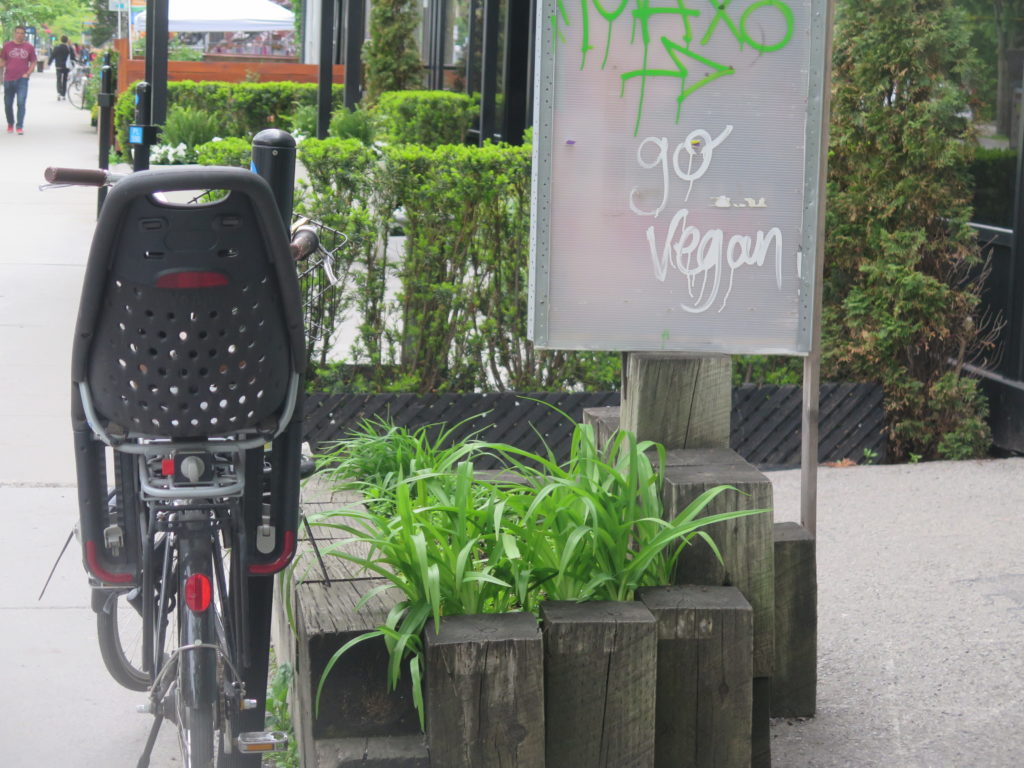
The rise of veganism in the last decade has been mind-boggling. From what began as a subversive and anti-establishment form of defying the global food industry and its horrific treatment of non-human animals, veganism has transformed into a cash cow. Mainstreaming veganism is ostensibly a ‘win-win-win’ situation, or so we’d like to believe—it’s good for your health, for the planet, and for animals too. Veganism, like innovations for urban eco-efficiency, is in itself a positive thing. But when we consider veganism from the perspective of rebound effects, things become a little more complicated.
Oxford researcher Dr. Marco Springmann explored the potential benefits of the world going vegan. In a scenario where a tax on the consumption of animal products leads to them being phased out entirely by the year 2050, Springmann projected that economic benefits for the global economy would amount to US$1.6 trillion, comprised of savings in healthcare costs and, in cutting greenhouse gas emissions by two-thirds, savings won by avoiding the disastrous effects of the global climate crisis. But what happens to this US$1.6 trillion next? Under capitalism, such a surplus in savings would never simply be left idle, but reinvested into further growth elsewhere. Here, the rebound effect rears its head once again.
If we understand growth from the perspective of thermodynamics, we see that it will always require resource inputs and always produce waste. Regardless of how much more efficient food consumption can become if we stopped consuming animal products the world over, the reinvestment of overall cost-efficiencies into more growth of one sort or another will ultimately drive more resource inputs, in turn leading to more waste. In other words, increases in scale eventually negate and then outpace efficiency improvements.
The same logic applies to organic agriculture. If overall health and environmental cost-efficiencies are internalized into economic growth forecasts, the surplus will most likely be invested into further growth, unless targeted efforts are made by national governments to deflect savings to pay down national debts or redistribute savings to enhance the well-being of the most marginalized in society. However, within a global capitalist economy, this would put the country at a competitive disadvantage—something it would likely attempt to compensate for at the expense of marginalized communities or the environment. Growth for the sake of growth is a zero-sum game; it negates every effort we collectively make to satisfy more with less. As Jason Hickel writes, ‘we might shift the economy to services such as education and yoga, but even universities and workout studios require material inputs.’
Unfortunately, the degree of material and energy reductions needed to respond to the climate crisis means that while veganism is important, it is simply not sufficient if it remains an avenue to continuously expand profit. A world of industrial vegan agriculture would be devastating both to the world’s biodiversity in its reliance on monoculture fruit and vegetable crops, but also in its failure to provide a dignified existence for its workers and its detrimental effects on the basic support system that the web of life depends upon. The cashew milk and dairy-free cheese one might find in their local ‘cruelty-free’ bakeries come at the expense of the cheap labour of women employed in southern India, enduring poor working conditions and painful injuries from the acids released in endlessly shelling cashews.
Industrial veganism revolves around personal choice, personal gains, and convenience above all else. This reinforces the very same apolitical individualism that atomizes us and erodes our drive to engage politically with our world.
If this is the case, then why does industrial veganism retain its enduring appeal? Growth-oriented capitalism will tempt you by selling veganism as something that aligns with your values, your health, your conscience, and your lifestyle, as Cowspiracy co-director Kip Anderson suggests:
People feel empowered, it doesn’t feel like a sacrifice. That’s a huge shift. Whereas before, veganism may have been viewed like you were giving up something, now it’s been reframed as what you gain: you gain health, you gain a greater sense of living in bounds with your values, you gain all the environmental benefits.
It is also worth noting that the failure to re-politicize veganism will not only lead to further ecological damage, but also perpetuates cultural-symbolic violence with deeply material effects. Though we might think of veganism as socioculturally and politically neutral, this is far from the case. On the contrary, veganism has a tendency to play into hegemonic logics of who is morally ‘pure’ and who isn’t. For one of the authors of this essay (Vijay Kolinjivadi), being raised vegetarian in an upper-caste Hindu family reveals how the moral policing of eating habits can be weaponized to condone unthinkable violence. Under a current right-wing Hindu fundamentalist government in India, street lynchings and brutal killings are being ‘justified’ by narratives of India as a nation only for ‘cow-loving’ Hindus. Vijay’s lived experience shows that the decision to go meatless is not neutral, but entangled in complex physical and social realities. As such, Western capitalism’s romanticization of elements of Eastern cultures to promote veganism is ultimately misguided. We have already witnessed the damaging effects of such colonial logics in the past. Their reproduction by vegan ‘saviours’ from the Global North is the last thing we need today.
In sum, industrial veganism revolves around personal choice, personal gains, and convenience above all else. This reinforces the very same apolitical individualism that atomizes us and erodes our drive to engage politically with our world. In this way, ethical consumption and the death of the politicized citizen emerge in tandem. The belief that ‘you can’t change the world, but you can change yourself’ is precisely what allowed neoliberalism to run rampant, and corporate capitalism to parasitize the state at the expense of public interests. Today, re-politicizing veganism is of paramount importance, ensuring that we don’t lose sight of the social, ecological and animal rights agendas at the heart of the vegan movement from its inception.
Power asymmetries and production of ‘cool’
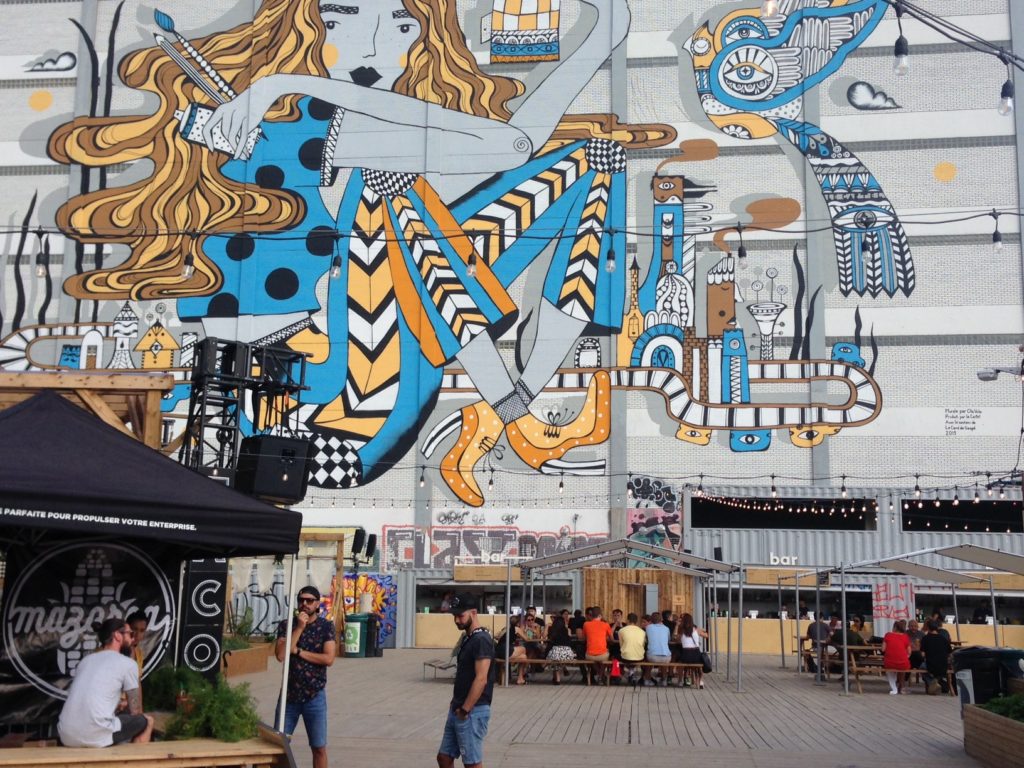
Just as the cultural dimension of veganism reveals deeply problematic tendencies, there is perhaps something deeper, more pernicious and fundamentally cultural at the core of attempts to pair eco-efficiency with economic growth. Projects like the MIL campus and the ‘revitalization’ of Parc-Ex exclude working class and racialized communities through aesthetic preferences. It is no coincidence that hipsterized coolness comes with a hefty price tag. Vintage furniture, organic markets, tattoo parlours, or third wave coffee shops all seem relatively benign, but ultimately serve to reinforcing classist divisions in society. As academics living in a ‘hip’ area of a ‘hip’ city like Montreal, we constantly struggle with the ways in which our aesthetic preferences actively shape and are themselves shaped by a particular socioeconomic class. Our efforts to acknowledge our complicity here and thus act responsibly in the face of these classist mechanisms have forced us to pay closer attention to the violent impacts that status symbols have on those not afforded access to them.
On the one hand, coolness just is. It is imbued with all the things that reflect deep relational values of care, affection, creativity, connection, authenticity, and meaning. It should have no racial, gendered, or socioeconomic boundaries and likewise have no impacts on those fronts either. On the other hand, it is also the reproduction of a particular way of being which inevitably and invariably sets in motion new avenues for capital to expand, allowing for everything that has meaning to be hollowed-out and commodified for profit. Just as George Monbiot reminds us that celebrity culture is the ‘smiling face of the corporate machine’, coolness-making is not a culturally benign process. It goes hand-in-hand with historically-entrenched asymmetries of power between those who are (or have been) the forerunners of style and expression and those whose ‘foreignness’ (i.e. not rooted in Anglo-Saxon or broader Eurocentric worldviews) has seen them systematically excluded and isolated. These power asymmetries, with all of their racialized and gendered dimensions, are most obvious in the ways in which capital (i.e. profit-making) tends to most closely align with.
Progressives who wish to do good but also promote a cultivated ‘cool’ aesthetic must reflect more seriously on the production of coolness and its deeper political consequences. The juxtaposition between Parc-Ex, one of Canada’s most economically impoverished and culturally diverse neighbourhoods, and the University of Montreal’s new MIL campus renders obvious the classist and racialized ways by which the emergence of coolness takes place. The question of who is permitted to participate in the aesthetics of hipness, eco-friendly chic, and health-conscious attitudes is inextricably associated both with class and inherited privilege. More problematic still is the fact that urban hipsters pride themselves on being ‘woke’ about sustainability issues, even as they simultaneously alienate the rural and overseas agricultural, peri-urban, and manufacturing classes, without whom such lifestyles in nominally ‘green’ and ‘dematerializing’ service economies would not be possible.
Eco-efficiency does not emerge in a vacuum. The city as an organism has tendrils that stretch across every geography and country. This interdependence is an inconvenient detail overlooked by the urban progressive hipster, and one that we must place at the center of our understanding in moving toward more sustainable societies.
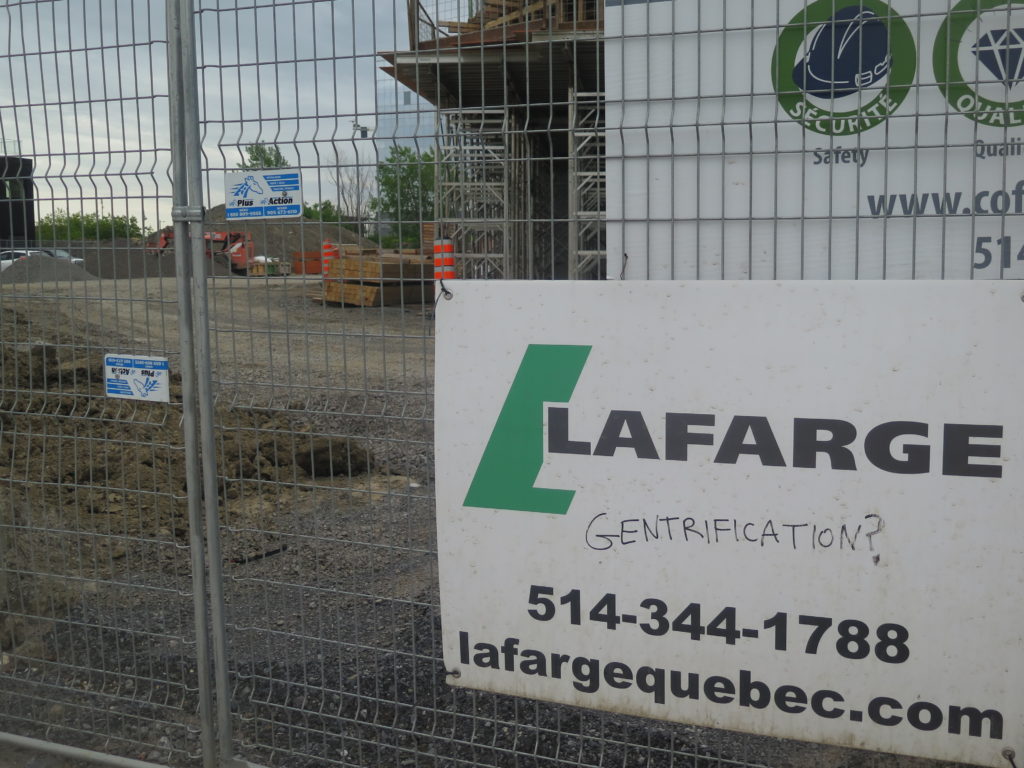
While privileged urban populations buy into aesthetics of sustainable ‘cool’, capitalism is literally burning up our planet, and burning through its resources. An aloof, detached, apolitical coolness driven by individualism and aesthetics cannot be the basis on which we fight for our future. While lifestyles appear marginally efficient, they are by and large a fabulous experiment of shifting social and ecological costs to those less privileged, both locally and globally. So how can we move forward from here?
Now is the time to abandon a singular focus on lifestyle choice, and to instead see resistance to externally-conceived and profit-driven developments as a moral and even survivalist imperative. We must work to reestablish community through solidarity economies to replenish those relations severed by growth-centred logic. This can start with simply getting to know your neighbours and generally being reflective and aware of the ways in which everyday actions impact those who live in very different circumstances.
By rejecting individualistic ‘green’ lifestyles, we also reject their underpinning myth of material and energy decoupling in growth economies. Any gains in technological efficiency must be accompanied by an economy built not on growth, profit and self-interest, but care and responsibility if they are to be effective. This, not hipsterized eco-efficiency, is where we should channel our desires for sustainability—something that so many of us are so dearly committed to, and something that we all urgently need.
Vijay Kolinjivadi is a post-doctoral researcher at the Universite du Quebec en Outaouais (UQO). His research interests pivot around decolonial futures, political ecology, degrowth, and agri-environmental policies. He is based in Montreal, Canada.
Daniel Horen Greenford is a PhD student in Geography, Planning and Environment at Concordia University and the Economics for the Anthropocene program at McGill University. He is active in policy making and politicking in the climate movement. You can find him occasionally on Twitter @horengreenford.
